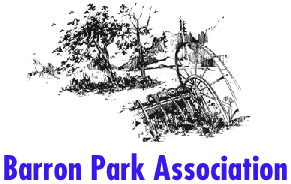

The Palo Alto Emergency
Community Notification System
Beginning at 4:45 AM on 17 May 2004 there were several sightings of a
cougar in the residential areas around the intersection of
Middlefield Road and Embarcadero in Palo Alto. Eight hours later, the
cougar was shot and killed by the Palo Alto Police Department. A
detailed Incident Report dated 24 May 2004 from the Police Department
to the City Council can be found at .
This incident has provoked extensive discussion within Palo Alto and
its neighborhoods about the city's Emergency Community Notification
System. The system allows the city to send a 30-second emergency
telephone message to affected areas of Palo Alto at the rate of 2,000
phone calls per hour. The system, however, was not activated on 17
May. According to the 24 May Incident Report, "At the time of the
initial two sightings, due to the few number of officers on duty, the
focus was on getting additional police units to the area. After the
third sighting, the focus shifted to notification of the schools. The
arrival of the news media resulted in staff responding to their
requests for information. With all the associated activity, staff did
not think of activating it [the system] until right around the time
of the third sighting." Police Chief Lynne Johnson has emphasized
that this was a mistake and has publicly accepted full responsibility.
How will the Police Department use the Emergency Community
Notification System in the event of another sighting or incident?
According to the 24 May Incident Report, after officers determine
that a sighting is credible, "residents in the area will be notified
via the community alerting system. Neighborhoods where an e-mail
list-serve exists will be contacted in order to get the word out on
the Internet."
A few details about the Emergency Community Notification System. The
system was purchased by the city for $172,000 in June 1998 as a
response to the 2-3 February 1998 flood. The phone number data base
(supplied by SBC) includes virtually all fixed telephones in Palo
Alto and is updated each month. The system does not call cell phones.
It can distinguish a fax and phone line, and if it gets a busy
signal, it will call that line later in the process. A message will
be left if the phone is answered by a voice mail system or answering
machine. Those to be contacted can be targeted by outlining areas on
a map displayed on a computer; the area is then linked to the phone
database. Phone call areas can be prioritized (i.e., one area first,
and then another). The Palo Alto system has 32 dedicated phone lines,
supplemented by 16 additional phone lines during an emergency.
Use of the Emergency Community Notification System is restricted to
situations in which there is an imminent threat to life. According to
Sheryl Comtois of the Palo Alto Police Department, the system has
been used four times since its implementation: twice for potential
flood warnings, once concerning an individual attacking others with a
hammer, and once during Y2K.
On 10 February 2003, Palo Alto carried out a test of the Emergency
Community Notification System to simulate an emergency warning of
flooding in Barron Park. Seventy-four addresses in the 700 and 800
blocks of Los Robles and El Centro participated in the test. An
excellent report by Bob Moss can be found at www2.bpaonline.org/Emergencyprep/alert-test-2003.html.
Bob concluded that "The system is fully operational, relatively easy
and straightforward to activate and use, and could contact all 1200
homes [3800 phone numbers] in Barron Park in about 3.5 hours." Bob
further stated that "We still plan to use our [neighborhood] phone
and E-mail alert systems in case of flooding danger, but the city
emergency phone alert system is an excellent way to notify far more
people faster than any local phone tree could."
E-mail alerts can supplement the Emergency Community Notification
System. For example, many residents of the Duveneck/St. Francis
neighborhood first became aware of the cougar on May 17 via a message
on that neighborhood's e-mail site. For several reasons, however,
E-mail lists do not substitute for the city's phone system: (1) not
everyone has e-mail, (2) many who have e-mail check it only
infrequently, (3) only a fraction of residents belong to a
neighborhood association, and (4) some neighborhoods do not have
active neighborhood associations. Nevertheless, Palo Alto and its
neighborhood associations are exploring how the neighborhood e-mails
lists could be better used as a supplement to the Emergency Community
Notification System. Perhaps e-mail from specified addresses at the
Police Department could be automatically forwarded to neighborhood
lists (all or just selected ones, depending on the circumstances).
Another supplementary notification resource is the Palo Alto Weekly's
e-mail bulletin service. This free service is used only to notify
subscribers of urgent news-breaking events and subsequent related
updates; it is not used for any other purpose (e.g., SPAM). Anyone
wishing to subscribe can do so by visiting and
scrolling down to Palo Alto Online E-Bulletins, directly below the
Palo Alto Weekly heading.
During the month of June, the City of Palo Alto will evaluate its
overall strategy for emergency notification, including not only phone
and e-mail but also all other suggested modes (e.g., use of
loudspeakers in police cars and fire engines). A meeting on 15 June
2004 of the Palo Alto Police Department and leaders of Palo Alto
Neighborhoods (including Doug Moran, BPA President) will ensure
neighborhood input to these discussions.
By Patrick Muffler, BPA Emergency Preparedness Chair